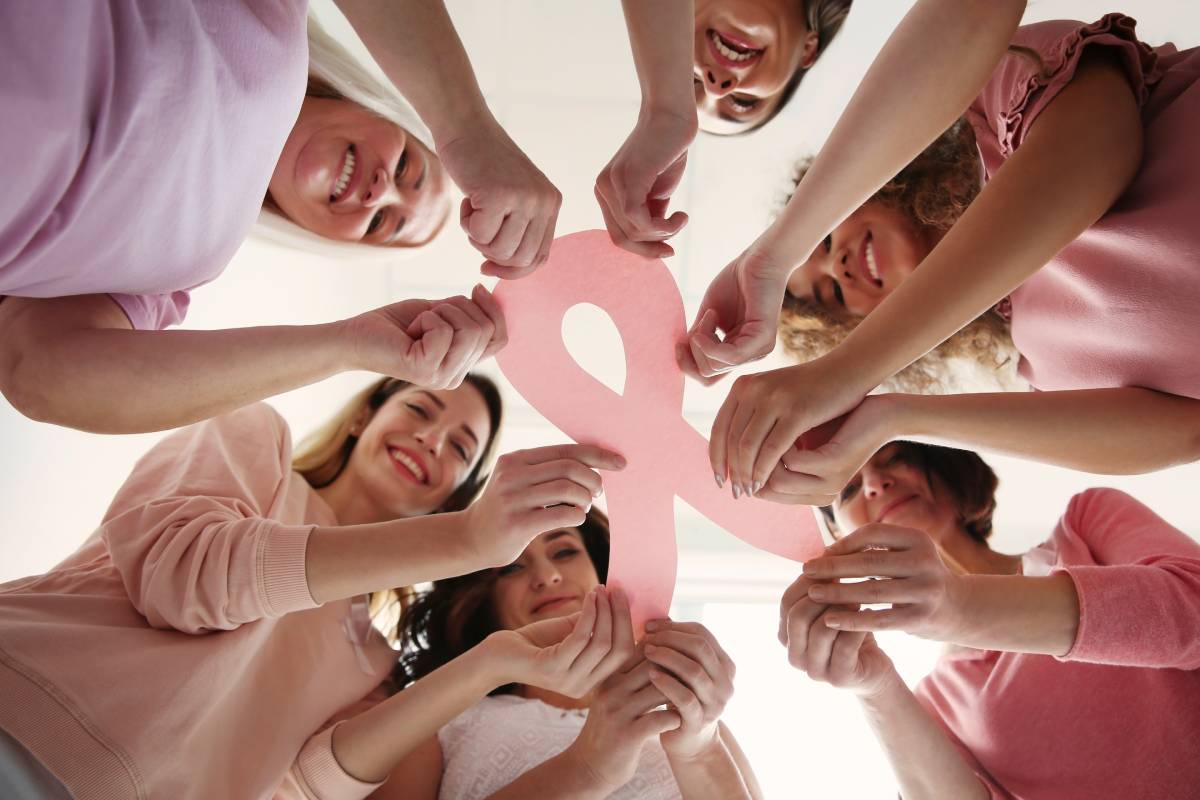By: Ovation Obstetrics & Gynecology
Breast cancer is common—but the earlier it’s found, the better the outcomes. What steps can you take this October to lower your risk and catch cancer early? In this guide, we outline practical, evidence-based actions you can start today. If you have questions about your personal risk or screening plan, Ovation Obstetrics & Gynecology in Frisco, TX is here to help.
What Is Breast Cancer Awareness Month?
Each October, health organizations spotlight education, screening, and support for those affected by breast cancer. The goal is simple: help more people understand their risk, recognize warning signs sooner, and get timely screening and care.
How Breast Cancer Screening Works
Screening aims to find breast cancer before symptoms appear. The most common screening test is a mammogram (a low-dose X-ray of the breast). For some higher-risk patients, MRI or earlier/more frequent screening may be recommended. Screening guidelines vary slightly across professional organizations, but most agree that average-risk women should begin routine screening around age 40. Talk with your OB/GYN about the best start age and frequency based on your personal and family history.
Key Signs and Symptoms to Watch For
Knowing your “normal” helps you notice changes sooner. Contact your provider promptly if you notice: • A new lump or firm area in the breast or underarm • Changes in size, shape, or symmetry of one breast • Skin dimpling, puckering, redness, scaly rash, or thickening • Nipple changes (new inversion, discharge that’s bloody or clear) • Persistent, unexplained breast pain
Lowering Your Risk: What You Can Control
While not all risk is preventable, these habits support breast health: • Stay active: Aim for at least 150 minutes of moderate exercise weekly. • Maintain a healthy weight: Extra adipose tissue can increase estrogen exposure after menopause. • Moderate alcohol: Limiting intake (ideally ≤1 drink/day) lowers risk. • Don’t smoke: Smoking is linked to more aggressive disease and poorer outcomes. • Breastfeed if possible: Breastfeeding is associated with a small reduction in lifetime risk. • Review hormones and medicines: Discuss combined hormone therapy and other meds with your clinician to balance benefits and risks. • Know your family history: Share updates (on both sides of the family) with your OB/GYN; you may qualify for genetic counseling or earlier imaging.
Who Should Consider Earlier or More Intensive Screening?
You may need a personalized plan if you have: • A strong family history of breast, ovarian, pancreatic, or prostate cancer • A known genetic variant (e.g., BRCA1/2, CHEK2, ATM) • Prior chest radiation (especially between ages 10–30) • History of atypical hyperplasia or LCIS on biopsy • Very dense breast tissue on prior mammograms • Lifetime risk ≥20% on validated models (e.g., Tyrer-Cuzick) If any of the above applies, your provider may recommend a risk assessment by age 25–30, with mammography plus annual breast MRI starting as early as age 30 in some cases.
Mammogram Tips for a Smoother Experience
- Schedule when breasts are least tender (often the week after your period). • Skip deodorant, powders, or lotions under arms/breasts on exam day (they can look like calcifications on imaging). • Bring prior mammograms or list your imaging centers so radiology can compare studies. • Tell the technologist about prior surgeries, implants, or areas of concern.
FAQs We Hear in Our Office
Does a normal mammogram mean I’m in the clear for a year? It’s very reassuring, but stay breast-aware between screenings and report new changes right away. Are 3D mammograms (tomosynthesis) better? Many centers use 3D mammography because it can improve cancer detection and reduce callbacks, especially in dense breasts. I’m under 40—should I be screened? If you’re average risk, you typically start around 40. If you have higher risk, you may need earlier and/or additional imaging—ask us for a personalized plan. Do mammograms hurt? Compression can be uncomfortable but brief. Communicate with the technologist—they can adjust positioning to help.
Final Thoughts: Your Next Step
Awareness is powerful, but action saves lives. Use this month to schedule your screening, ask about your risk, and set healthy habits for the year ahead. For personalized guidance and convenient appointments in Frisco, TX, contact Ovation Obstetrics & Gynecology today: https://www.ovationobgyn.com/contact-us/
